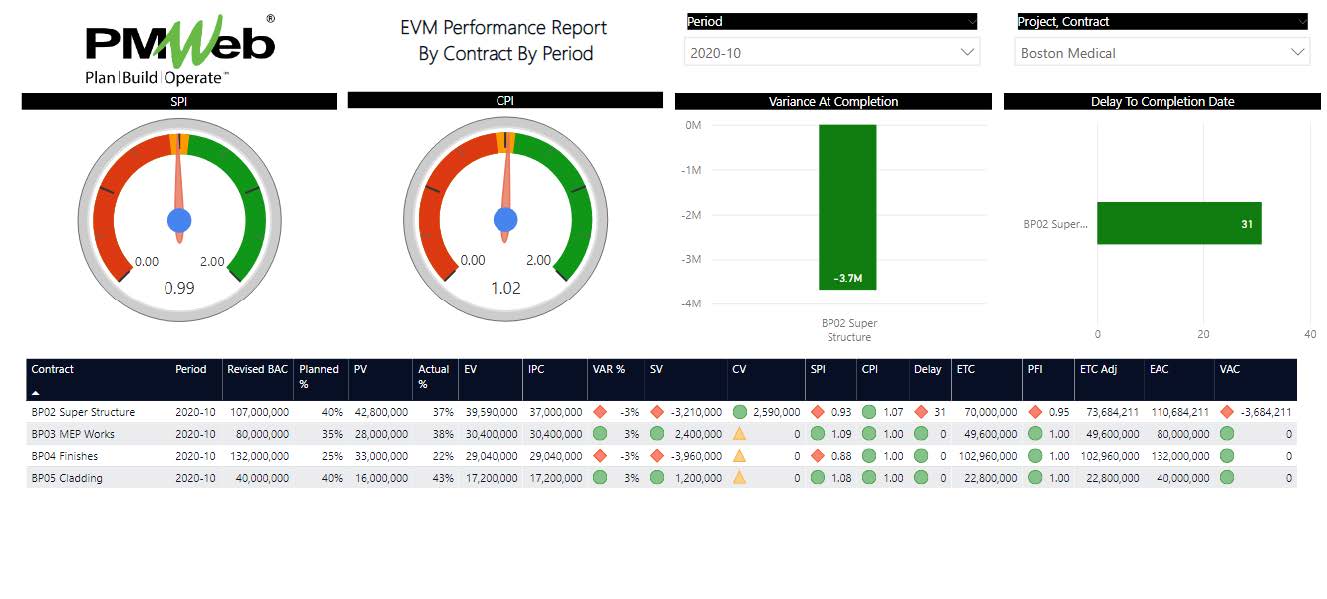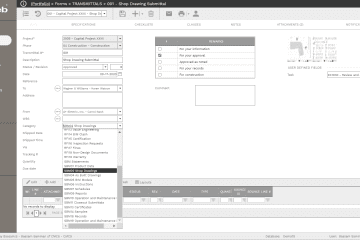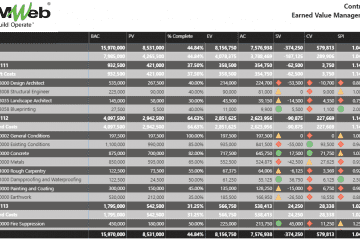On some capital construction projects, the management of all financial matters including contract management will not be carried out at the project level. Whether it was a project owner or contractor, the common practice is that all financial and contract management processes will be managed by the entity’s contract management department at the head office. Although the project team will be given the details needed for managing and reporting the project’s financial performance status, nevertheless, the direct management of all contract management business processes will be carried out at the head office.
This means that for each contract to be managed and reported on, the financial information that the project team will have access to will be limited to the approved budget, approved adjustments, awarded contract value, approved change orders to date, actual value of the monthly approved work in place. It should be noted that for lump-sum contracts, the current revised budget should equal the current revised contract value as project contingency and management reserve amounts will be managed by the contract management department at the head office.
The project team will be able to capture the planned percent complete values of each period from the approved baseline schedule as well as the schedule actual percent complete at the end of each period. The team can use a performance factor index (PFI) to adjust the calculated Estimate to Complete (ETC) value. This information along with the provided details above will be the basis for the Earned Value Management (EVM) performance reporting.
Using a Project Management Information System (PMIS) like PMWeb, the contract management processes will not be used but rather a custom form will be created to capture the above data and calculate the EVM metrics. The form header will include details of the project, contractor, performance period, original budget, and approved adjustments as well as awarded contract value and approved change orders to date. The revised budget and contract values will be calculated with this information. In addition, the header will include the project’s planned and current schedule dates along with the current project delay in days. Of course, other fields for contract type, bid package name among others can also be added if needed.
The form will also include a table that will be used the capture the planned monthly percent complete based on the approved baseline schedule, actual schedule percent complete, total of interim payment certificates approved to date, and a performance factor index (PFI) to adjust the calculated estimate to complete (ETC) value. All other values in the table which are needed for the EVM reporting will be automatically calculated by PMWeb. For example, the planned value for each period will equal the revised contract value multiplied by the planned percent complete at this period while the earned value will be actual percent complete multiplied by the same revised contract value.
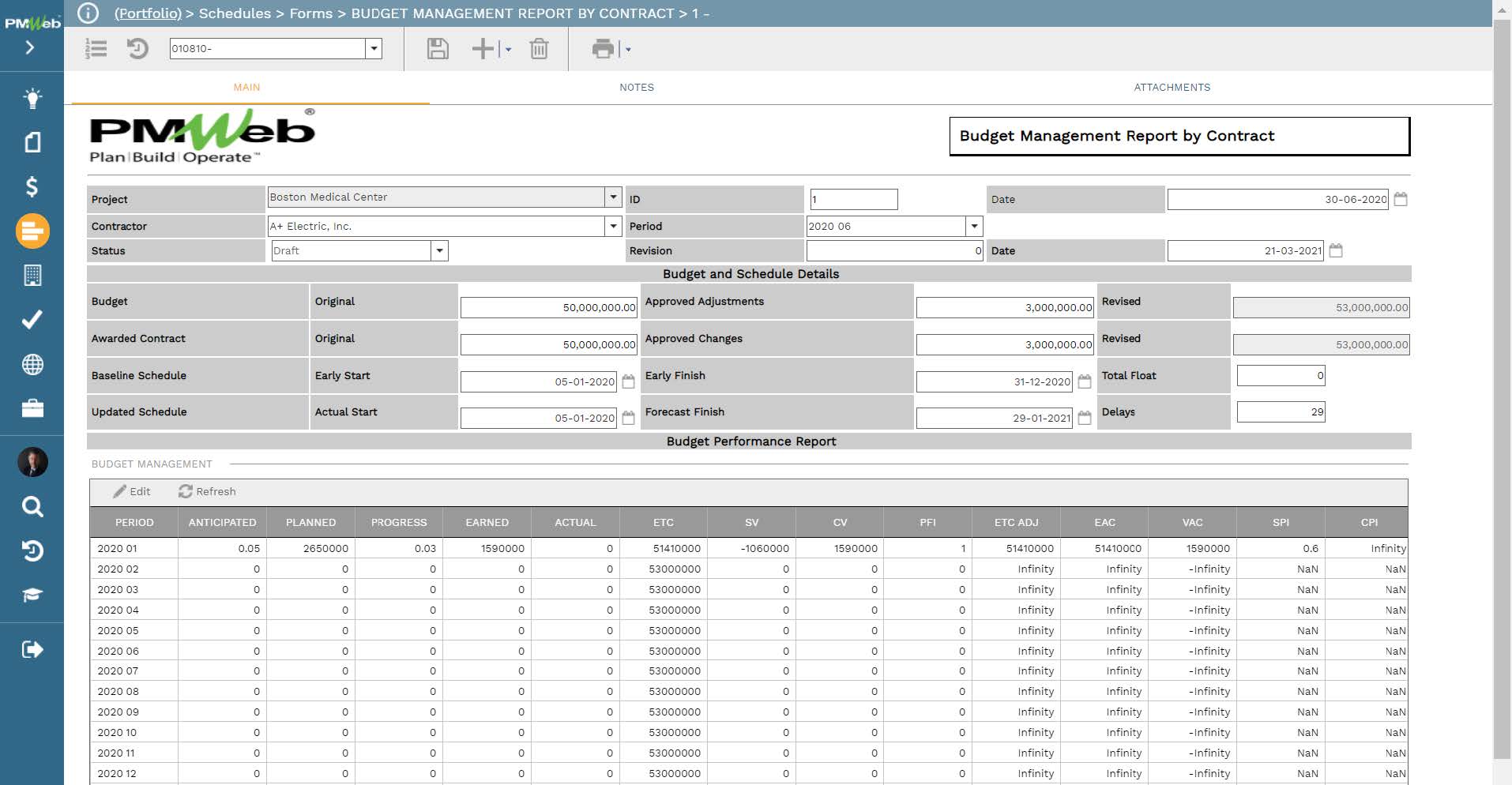
Since the main objective of this form is to manage the performance of the lump sum contracts awarded on a project, the Cost Variance (CV), Cost Performance Index (CPI), and Estimate At Completion (EAC) measures have different usage and calculation than what will be used for on a true earned value management report. The purpose of the Cost Variance (CV) in this form is to calculate the amount of approved interim payment withheld on the entity performing the contract. In other words, the Earned Value (EV) is what this entity interim payment certificate (IPC) should equal to if the work in place was fully aligned with the weighted or cost-loaded project schedule. Accordingly, the Cost Variance (CV) between the Earned Value (EV) and Actual Cost (AC) or actual interim payment certificate is an indication of either the contractor was underpaid or overpaid for the approved work in place.
In addition, since all of those awarded contracts are based on lump-sum contracts, the Estimate to Complete (ETC) value for each contract should equal the variance between what has been actually invoiced through the IPC and not the Earned Value (EV) which was based on the project schedule percent complete. The Performance Factor Index (PFI) is a factor that can be used by the project team to adjust the above-calculated Estimate to Complete (ETC) value for potential changes and risks that could affect the remaining balance of the contract. This modified ETC value will be defined as ETC Adjusted.
Accordingly, the Estimate at Completion (EAC) for each awarded contract will equal the total value of Interim Payment Certificates (IPC) issued to date plus the adjusted Estimate to Complete (ETC Adj) amount. The variance between the approved revised contract value, also known as revised budget or budget at completion, and the Estimate at Completion (EAC) value will be the anticipated at completion cost overrun for an awarded contract agreement.
To ensure the credibility of the reported contract performance, each “Budget Performance Report by Contract” form needs to be attached with the baseline project schedule showing the details of the reported planned percent complete values as well as the updated project schedule report showing the basis for the actual percent complete and current delays. In addition, it needs to be attached with the documents that detail the approved budget and budget adjustments. Further, copies of the approved contract approved change orders and approved interim progress need to be attached. All those supportive documents must be uploaded and stored in their designated folder or subfolder in the PMWeb document management repository.
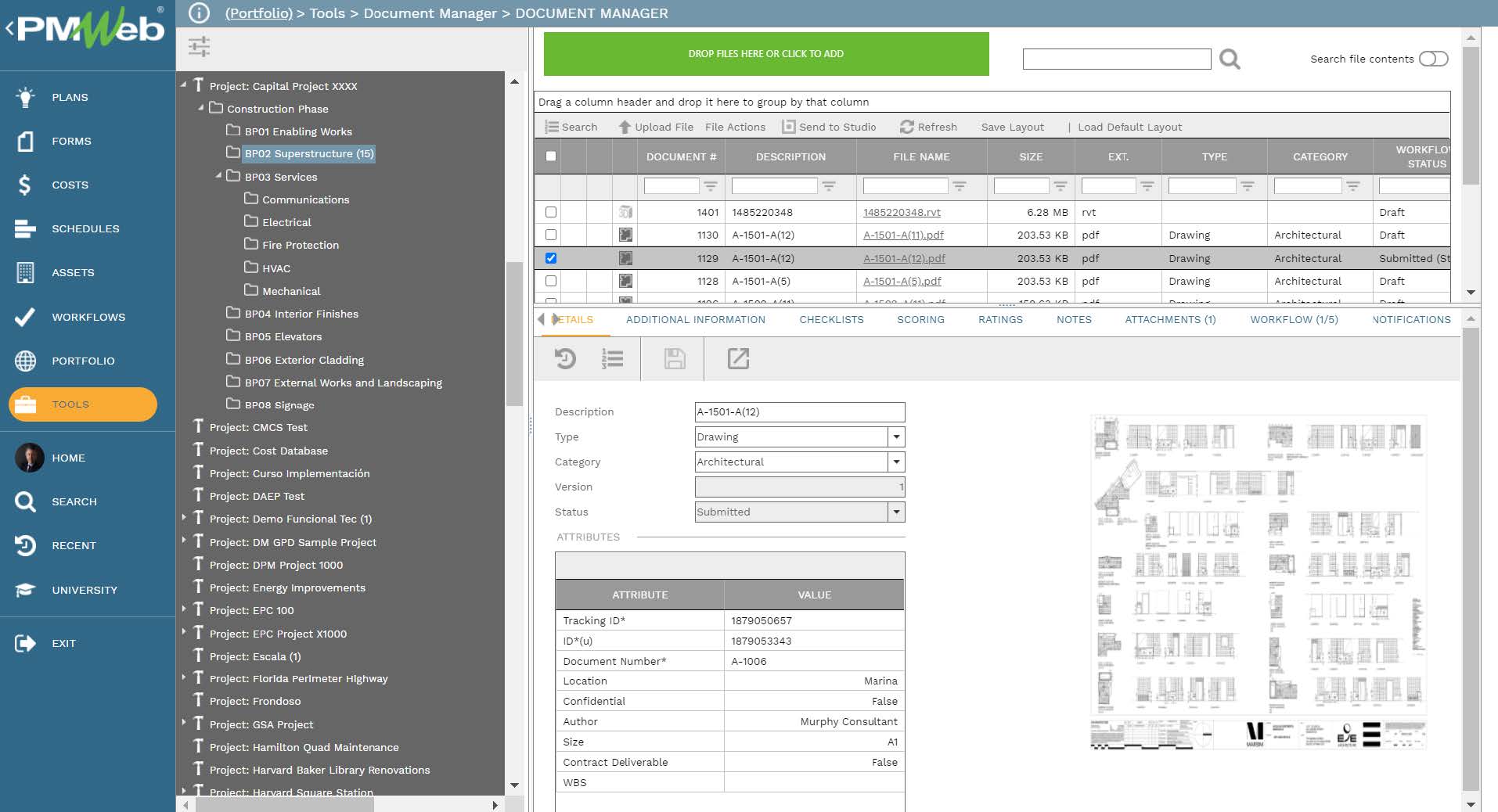
In case there is a need to formally submit, review and approve the “Budget Performance Report by Contract” report, a workflow will be assigned to the form to formalize this process. The workflow will identify all needed steps, the duration for each step, responsibility for performing each step, actions that can be taken for each step, and the sequence for performing those steps.
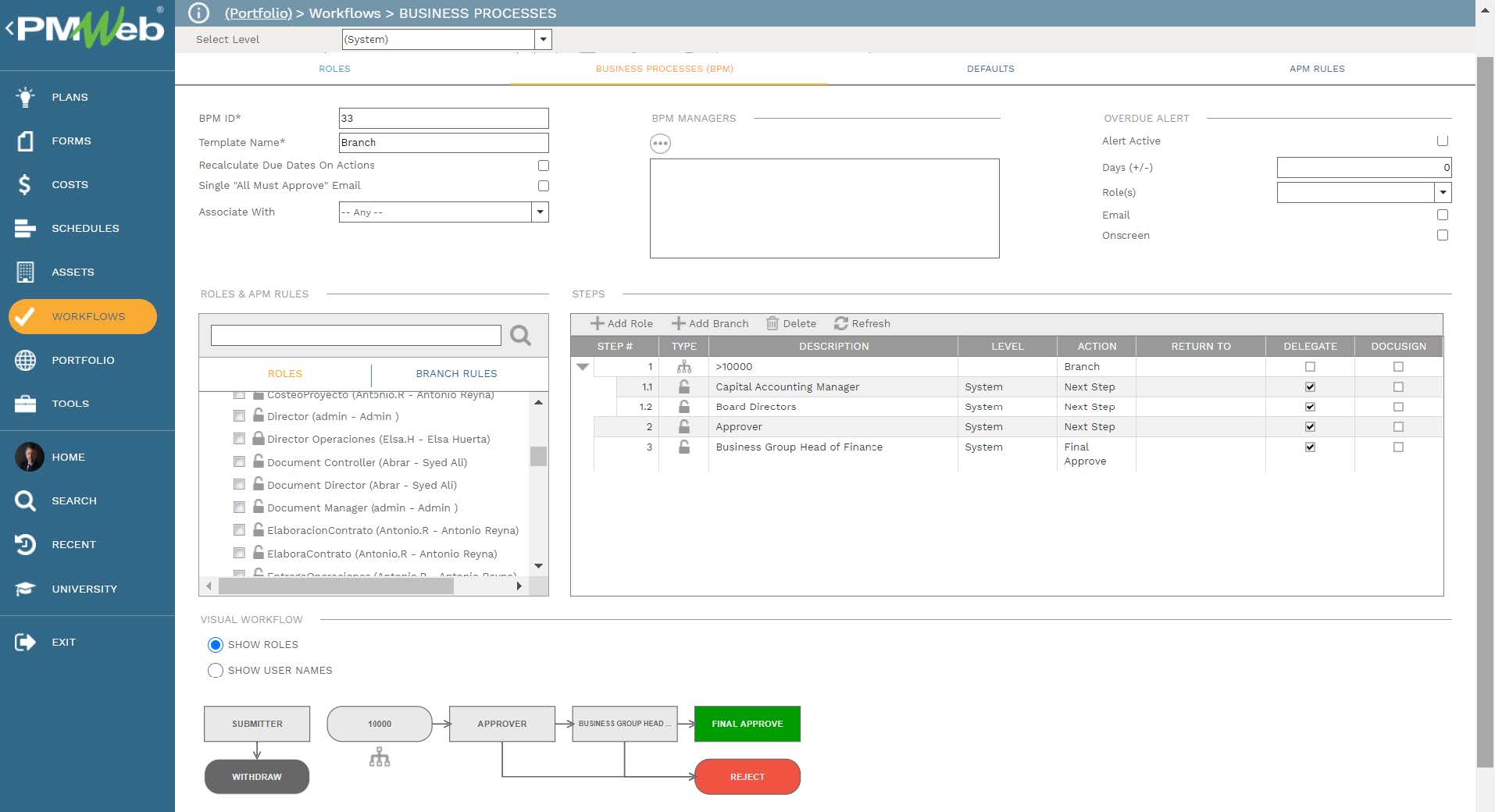
The data captured in the “Budget Management Report by Contract” form will become the basis for Earned Value Management (EVM) report for all contracts managed by the entity whether those contracts were for a single project, program of projects, or even portfolio of projects.
For example, for EVM Performance Report by Contract shown below, the information displayed in the table has almost identical data fields to the “Budget Management Report by Contract” form with red, yellow, and green color indicators added to some of the earned values measures to highlight the performance of each contract at each progress period. The report also includes line visuals to display the last three months’ performance for schedule and cost performance indices as well as the number of delays to the current project completion date. In addition, it has a bar chart visual to detail the original and adjustments to each awarded contract. The report also has two filters to select the projects and contracts to be reported on and the periods included in the tabular report.
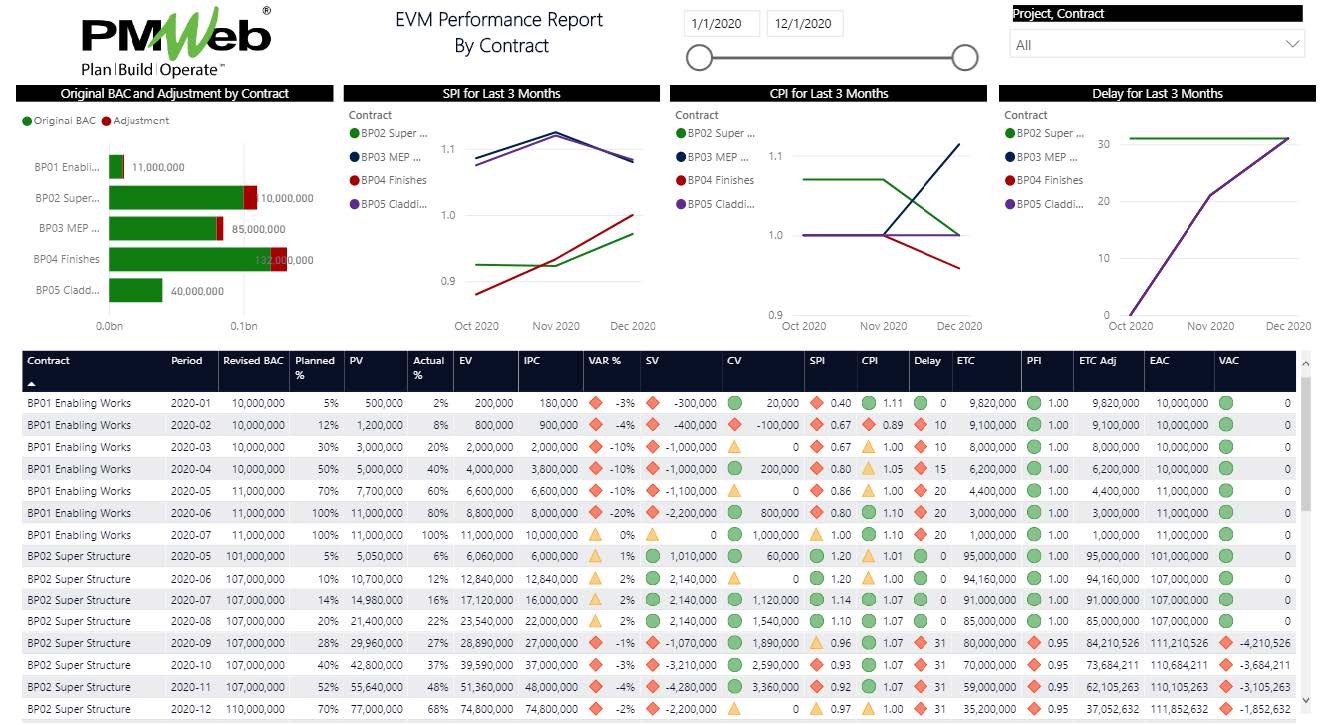
Another report can also be prepared to show the earned value management (EVM) performance for all awarded contracts for a specific project period. The report will include a table to details the EVM values for the selected contracts as well as gauge visuals to show the SPI and CPI performance status. In addition, the report will include a histogram to show the expected cost overrun or negative variance at completion (VAC) values by contract. In addition, the report will have a bar chart to identify the amounts of delays that each contract could be subject to. The report will include a filter to select the desired period to report on as well as a filter to select which projects and contracts within a project to be reported on.
